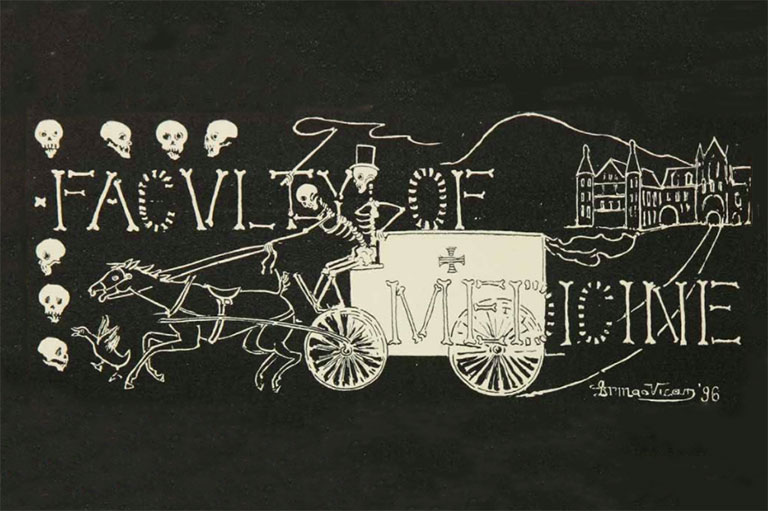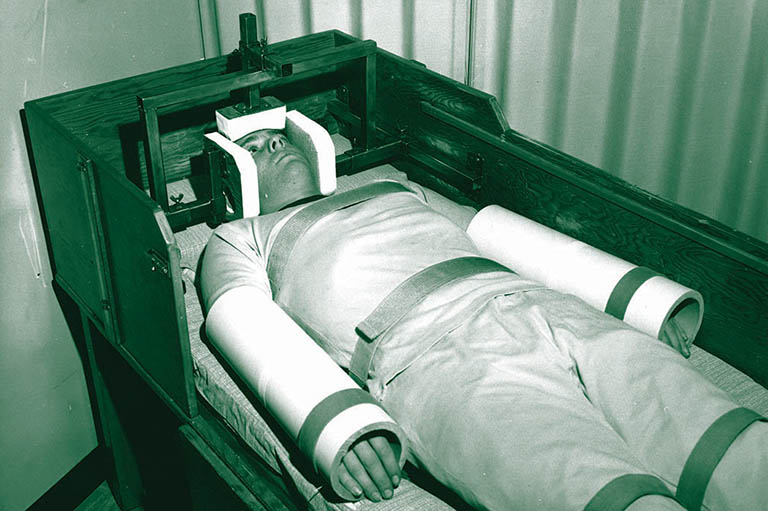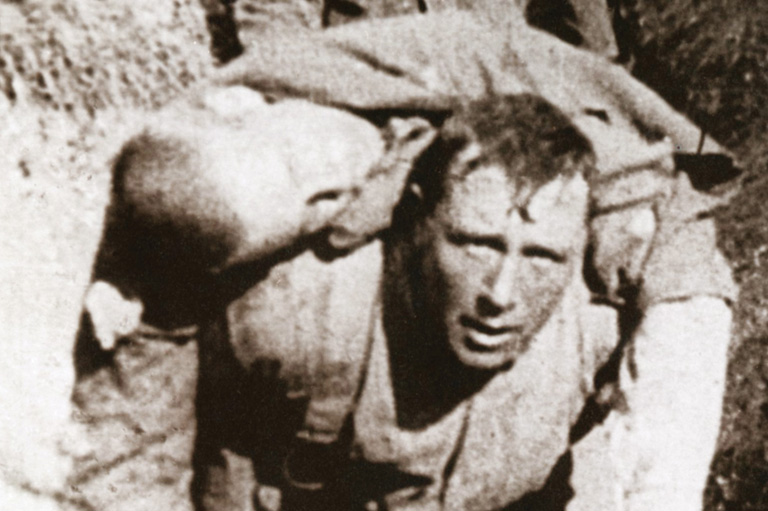The Doctor and the Madmen
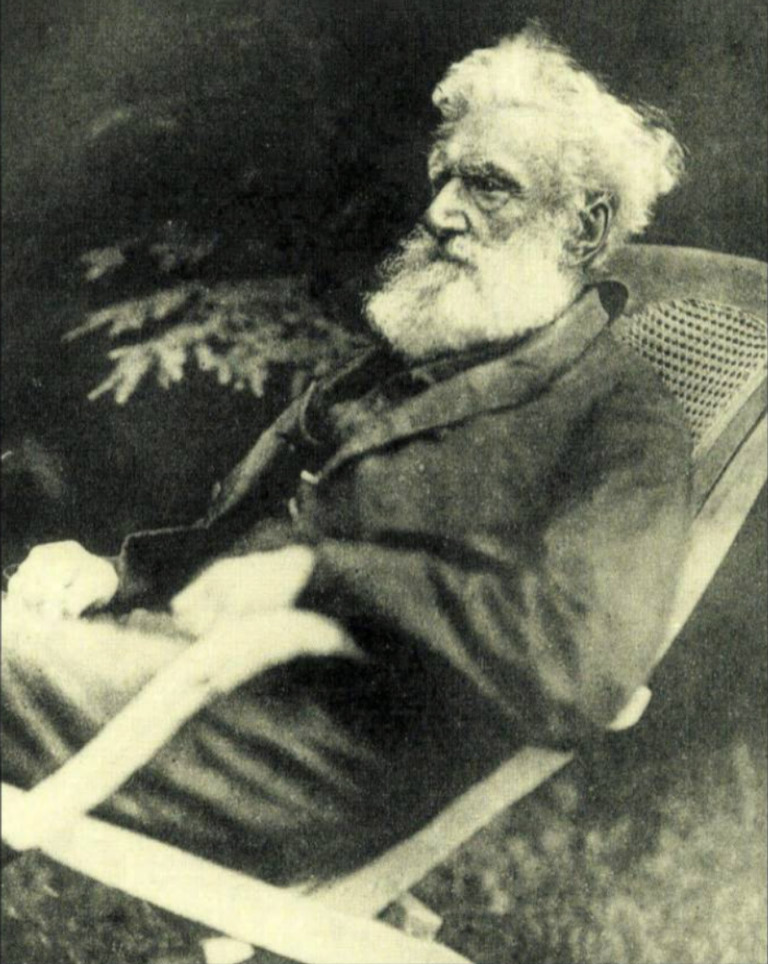
One fine day in late winter, 1826, a young doctor and his wife arrived in Quebec City in a horse-drawn sleigh, galloped around the city a few times, liked the look of it, and decided to stay for the rest of their lives.
Dr. James Douglas was fleeing from the United States. His crime? Vandalizing fresh graves, digging up the corpses, and taking them home to dissect them. He was twenty-six years old.
At the time of his crime, Douglas was teaching surgery and anatomy at Auburn Medical College, in New York. To pass their surgical exams, his students had to do dissections, but, in a Catch-22, the law made it impossible to obtain enough corpses. It was the second time Douglas had been caught.
The first time he’d dug up the body of a black slave owned by a judge, who let him off with a warning. This time Douglas made a dreadful mistake: thinking he was digging up a poor beggar, he instead robbed the grave of an eminent citizen. When someone recognized the dead man left carelessly in his office, Douglas and his wife didn’t linger. They fled by sleigh that very night for Canada.
Soon after he arrived in Quebec. Douglas established a reputation as one of the most skilled physicians in Lower Canada. A pioneer of nineteenth-century medicine, he was an innovator in public health, vaccination, and medical education and regulation. But it was in the care for the mentally ill that he made his reputation. He opened Lower Canada’s first asylum, and under his watch, for a brief period of time in the mid-nineteenth century, the treatment of the mentally ill was perhaps as humane, creative, dignified, personal, and healthy as it’s ever been before or since.
When Douglas left Quebec forty years later, in an act of historical symmetry, he took two corpses with him: this time they were mummies, pilfered from Egyptian graves during his holidays abroad.
James Douglas grew up in Scotland, the son of a Methodist minister, and began bis medical studies at age thirteen. By eighteen he had signed on as surgeon on a Norwegian whaler, and spent the year patching up fishermen ripped apart in pursuit of whales in Hudson Bay.
He returned to finish his studies, and took off for India. A year later he found himself in Honduras among the Mosquito Indians, helping to found a disastrous new colony. The malaria, the fevers, the hostility of the natives, and the starvation were too much even for Douglas, and he fell dangerously ill. Half-conscious, he was thrust on a schooner bound for Boston.
On his recovery, planning to return to Scotland via Montreal, he was forced by a landslide to stop in Utica, New York. There, word got around that he was a surgeon. One day he was asked by a farmer to look at a vicious-looking pitchfork wound. Douglas fixed him up. In gratitude the farmer gave him fifty dollars and a horse. Douglas needed no more encouragement: he stayed, married, and began a teaching practice.

Soon after arriving in Quebec he started a little school of surgery, and anatomy in the basement of his house.
Four years later his wife died; he remarried shortly afterwards. No one has recorded what either wife thought of the corpses being dissected in the basement, but when his friend Joseph Painchaud offered him dissecting quarters in his house, on condition that he and his son could attend the lessons, Douglas agreed.
Another young student of Douglas’s, Edward Dagge Worthington, described having to prepare dissections for the following day’s lecture in this “dismal and foul-smelling” basement room, around which “men’s, women’s and children’s heads galore were ranged on shelves.” His only company was “several partially-dissected subjects and numerous rats which kept up a lively racket coursing over and below the floor and within the walls.”
Within a year of arriving in Quebec, Douglas had become one of its most notable medical educators. When Asiatic cholera reached Europe, he predicted that it would soon cross the Atlantic. Based on his experience in Honduras, he advised his medical colleagues to prepare for the worst.
When the infectious disease finally arrived in Quebec in 1832, it killed one-eighth of the population, many within hours of contracting it. During this period, Quebec was receiving hundreds of shiploads of immigrants, many from countries where cholera was rife. Many people died at sea. The rest were received at the new quarantine station at Grosse-Ile, but the numbers grew so overwhelming, ships sailed on to Quebec City unchecked.
To care for the sick, tents were erected on the Plains of Abraham. Douglas and the handful of qualified doctors in town did their best, but didn’t know how to stop the disease. It felt like wartime.
The noise of cannons roared through the city, as cannon fire was thought to clean the air, and the smell of burning tar assaulted the nostrils, as people hoped that by spreading tar in the streets and setting light to it they could burn up the disease. Meanwhile, the rich, including Douglas, sent their families to the country, and often ended up spreading the disease further afield.
Douglas worked so hard during this and two subsequent epidemics that his health never fully recovered. Twice a week, however, he would leave this nightmare of desolation and go trout fishing in the Montmorency River, without which, he claimed, he would never have survived.
The only good night’s sleep he ever had was on a pile of cedar boughs during a moosehunting expedition. The fruit of one of these expeditions, a gigantic stuffed moose, stood at the loot of the staircase of Douglas’s house, and proved a star attraction for many of Quebec’s most famous visitors, including Charles Dickens.
By now his reputation was thoroughly established, and in 1837 Douglas, along with two colleagues, established Quebec’s College of Physicians and Surgeons, the first successful attempt to regulate the profession in the country. That same year he was appointed director of the new Marine and Emigrant Hospital, built to handle the sailors and immigrants from the 1,200 ships that arrived in Quebec every year.
There was plenty of opportunity for surgical practice at the new hospital, as sailors were still hoisting and stowing cargo by hand, and frequently had terrible accidents. Under his leadership the Marine and Emigrant Hospital became the best school for surgery in the continent, and students fought to study under Douglas.
With 7 uniquely curated newsletters to choose from, we have something for everyone.
This was before the era of anesthesia, when the best surgeon was the one with the swiftest hand, the sharpest knife, and the coolest nerve. One minute was considered ample time for an amputation, and the surgeon’s skill was judged largely by his speed and the amount of blood on his frock coat. Douglas, said Worthington, “was the most brilliant operator I ever saw.”
Douglas was not only one of Canada’s finest surgeons, he was also one of its first psychiatrists, although the word hadn’t yet been invented (alienist was the prevalent term). In the nineteenth century, there was a gathering international movement to extract the mentally ill from the prisons and hospitals in which they were languishing and put them in special asylums where they could both work and enjoy a certain freedom.
In Quebec at the time, some two hundred deranged people—most considered a danger to themselves or others—were being kept in prison basements or isolated lodges in general hospitals. Some of them were chained to the floor for years.
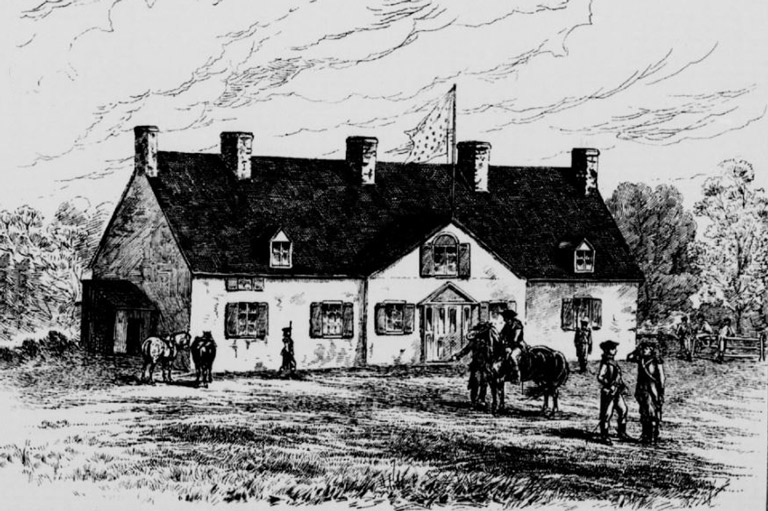
William Hackett, the government’s medical officer at Quebec’s General Hospital, had been urging reform as early as 1816. Aware of progress made in England and France, he urged “the absolute necessity of air and exercise, with a certain scope of space, gardens etc. adapted to recreation and work, surrounded by walls high enough that they cannot be scaled.”
Eight years later, the Richardson Commission in Quebec reported the atrocious conditions of the insane and likewise urged reform along the lines of asylums opened in England and Scotland. By the 1840s, in the United States, social reformer Dorothea Dix was crusading against the appalling conditions under which the insane were kept and successfully lobbying governments for improvements in institutional care.
In 1843, she visited Governor General Charles T. Metcalfe. Two years later Metcalfe’s government decided to open an asylum in Quebec City based on the new international reforms, Douglas was asked to run it.
James Douglas specialized in clubfeet and squints. He had no experience in mental health, and freely admitted to never having seen the prison or hospital outbuildings where the insane were locked up. However, before coming to Quebec, he had taught at the medical school in Auburn, New York, the town’s prison providing him with a ready supply of corpses for dissection.
There, radical prison reform had been taking place, which may have had an impact on Douglas’s thinking: Rather than shut prisoners up in perpetuity, which was expensive and led to insanity, prisoners were being allowed recreation and work, which let them earn their keep and stay healthy.

Douglas accepted Metcalfe’s commission, and in turned asked Joseph Morrin and Charles-Jacques Frémont, who had no more experience than he did, to join him. He threw himself into the project with his customary stamina.
He leased an eighty-hectare property that, handily, lay just next to the summer house where he went fly-fishing, and opened the Beauport Asylum. And for the next twenty years, wrote his son James Douglas Jr., “my father was devoted heart and soul to this branch of medical science.”
Rather than blaming demonic possession and parental neglect, Douglas and his colleagues attributed insanity to alcoholism, city life, sin, and heredity — in modern terms, a combination of environment and genetics, with some elements of personal morality. For the first time, the notion surfaced that the insane were ill, and therefore curable.
”How many of the 2,802 lunatics, at present within the borders of Canada,” wrote an author in the Medical Chronicle in 1855, “if properly treated, would be rejoicing in the possession of an unclouded reason, who are now furious maniacs, stolid melancholies, or drivelling idiots?”
Historians of mental health care Quebec have argued for decades about the motives of the pioneers of the province’s asylum movement. Was it to warehouse the sudden surplus of destitute Irish immigrants? Was it part of the Medicalization of Everything movement? Were the British reexerting social control after the failure of the Patriote Rebellion? Was it the capitalists exploiting the destitute poor as a means of production? Was it institutional crisis-management to deal with the fallout from increasing urbanization? Or was it simply that people began to notice that the insane were people too?
Twenty years after it opened, the hospital was already overcrowded, with 550 people living in cramped and badly ventilated quarters. In 1884, Daniel Hack Tuke, author of Insane in Canada, reported that it was a disgrace. But between 1845 and 1860, when James Douglas was director, the treatment of the mentally ill in the Beauport Asylum was a model for its time.
When the first eighty-two patients arrived in 1845, hopes were high for immediate improvement in their mental and physical condition, though they were in such bad health, Frémont wrote, that “indeed, the question was not whether they would recover their reason, but how long they would live.”
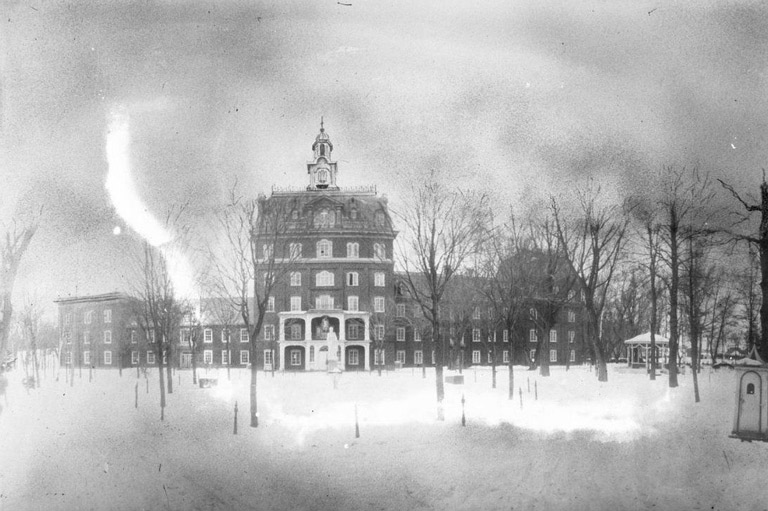
The doctors’ first report to the legislature described the arrival at their new country home of the first patients, some of whom had been confined for as long as twenty-eight years:
Most of them had never been allowed to leave the separate small cells in which they had been confined; and, excepting on an occasional visit from the Grand Jury, they had rarely seen any person but those who ministered to their argent wants. Of these patients almost all were filthy in their habits; many were considered destructive; and the remainder had become imbecile or idiotic.
They were removed in open carriages and cabs. They offered no resistance; on the contrary, they were delighted with the ride; and the view of the city and the river, trees and passers-by, appeared to excite in them the most pleasurable sensations. They were placed together at table to breakfast, and it was most interesting to witness the propriety of their conduct, to watch their actions, to listen to their conversation with each other, and to remark the amazement with which they regarded every thing around them.
All traces of ferocity, turbulence and noise had suddenly vanished; they found themselves again in the world, and treated like rational beings; and they endeavoured to behave as such. One, a man of education and talent, whose mind was in fragments, but whose recollection of a confinement of twenty-eight years was most vivid, wandered from window to window. He saw Quebec and knew it to be a city he knew ships and boats on the river and bay but could not comprehend steamers.
More patients arrived. Some came by boat from the prison in Montreal. The seven who came from the Hôpital Général in Trois-Rivières arrived in chains and bit anyone who approached them, but once freed became peaceful and docile.
This propitious start reaffirmed Douglas in his belief that rather than restraint patients needed work, fresh air, good food, religion, and amusement. In this, he was partly informed by his faith, Methodism, which advocated the dignity of work, temperance, and a healthy and disciplined life.
He disapproved of medication, a direct inheritance from Methodist founder John Wesley, who wrote against the poor “wasting their fortunes” on expensive and dangerous medicines and ignorant and dishonest physicians. Early treatment, which consisted largely of redirecting the thoughts of the insane “from their diseased channels” through work and leisure, could, he believed, prevent the mentally ill from falling into imbecility.
As a good Methodist, Douglas disapproved of dancing, except when it came to his asylum. Every Thursday there was a ball, which he and all staff attended. He provided theatre, magic lantern shows, and picnics, for which several cast-iron cooking ranges would be hauled out into the countryside and set up under a large tree. When they weren’t picnicking or dancing, patients worked at broommaking, farming, carpentry and weaving. Some got so well that they went home.
Douglas believed heredity to be one cause of mental illness, particularly in rural areas where city pressures were few. Among the burgeoning urban populations, however, causes could be found in alcohol, homelessness, poverty, religious dissidence, and the “secret vice” (masturbation), which “weakens the spirit.”
Douglas attacked these causes with his usual verve. He publicly deplored the condition of the homeless. He closed down a bar near the asylum. He gave a conference on alcohol and madness, warned against unions between close relatives, and called for a tempering of religious ecstasy and for moral education to allay the “secret vice.”
Above all, Douglas believed in an “unvarying system of conciliation and kindness.” Moreover, anyone who treated the patients with “violence, abusive language, or threats” was to be dismissed immediately.
Throughout his life, Douglas showed this tendency to be harsh and unyielding with the strong-minded, but infinitely gentle with the weak. He may have simply expected more of colleagues and people of privilege than he did of the mad. Or he may have held a Christian conviction that the mad, as the poorest of the poor, were God’s most cherished creatures.
What is certain is that the people at the Beauport Asylum worked a kind of magic on him. They allowed the tenderness in him to emerge through his fierce moral persona and the rigid personal routines he imposed on himself and others. His son wrote, “While overbearing, there lay in his nature a depth of tenderness which never came to the surface more attractively than in the presence of pain.”
However, the hope and idealism of the early days of the Beauport Asylum slowly shattered. The patients may have been living a happier life, but Douglas’s preventive, public-health approach was not curing them. The taxonomy of mental illness was enthusiastic but primitive, and only resulted in patients being divided into the curable and the incurable.
Much noise was made about those patients who were able to go home, but by the time the asylum submitted its first report, in 1848, three-quarters of the inmates were described as incurable.
By 1850, with Douglas neglecting his other duties in favour of the asylum, the Marine and Emigrant Hospital was steeped in scandal. The superintendent was found to be stealing food from patients to feed pigs that he kept out back. Two doctors were accused of having sex with the head nurse in the Protestant chapel. A third doctor was accused of running a brothel.
An 1851 Royal Commission found the wards dark and stuffy, the kitchen floors awash in mud and water, and judged that while James Douglas was an excellent surgeon, he was also, at least with those sound of mind, a tyrannical bully.
Douglas resigned from the Marine Hospital (which later became an asylum for young girls) to concentrate on his patients at Beauport and on his many nonmedical pursuits, including the study of Italian. Even his leisure, however, was not pursued in a leisurely fashion: the teacher was to be in his study by 5 A.M., and his family was expected to join him for breakfast an hour later.
The Italian lessons were part of a larger plan. Douglas had never recovered from the respiratory problems dating from his cholera days, and he prescribed himself nine winters in a row in Italy and Egypt.
Taking along his wife and children and often a few cousins for good measure, he rented an enormous, 300-metre-long sailboat to go down the Nile, along with a guard, a pilot, twelve oarsmen, a cook, an interpreter, and a manservant. He and his son took photographs and developed them as they went along, using the pitch dark of a temple or pyramid as their darkroom.
He became renowned in Egypt, too, as a good doctor. On one visit, he cured an Arab slave-trader of pneumonia, whereupon the grateful patient offered to send him a hippopotamus to Quebec in payment. “It was not the first time,” wrote his son, “that my father refused a fee.”
Douglas never quite got over his fascination with dead bodies. He brought two mummies back from Egypt, which caused a small stir in Quebec City, and he carted them about everywhere he went.
Late in life, after losing most of his money in rash investments, he went to live with his son in the United States and set the mummies on the veranda of the house, claiming that they put off potential burglars.
Always a great raconteur, Douglas spent his last days telling his grandchildren stories, tilling any gaps in his memory with his fertile imagination. He died in 1886.
The Asylum Today

James Douglas’s hospital, the Beauport Asylum, still exists, but now looks more like one of the prisons from which Douglas liberated his first patients.
After much rebuilding and expansion, it is a terrifyingly immense fortress on a hillside, with bars on most of its 7,000 windows. After the Sisters of Charity took it over in 1893, it became so huge that the province made it into a separate municipality and appointed the mother superior, Sister Marie-du-Sacré-Coeur, as the mayor. The mother-mayor had a special charisma for municipal works: it was her idea to provide the hospital with its own reservoir and power station.
The municipal arrangement was only changed in 1976. By the 1960s the hospital had over five thousand permanent residents, and its catchment area was half the province. Since then, with the deinstitutionalization movement, it has shed four thousand of its inmates, some of whom, ironically, ended up homeless or even in prison.
But a remnant of Douglas’s vision still persists in Beauport: some patients still work in the hospital’s farm, cheese factory, market garden, and carpentry workshop.
With 7 uniquely curated newsletters to choose from, we have something for everyone.
Themes associated with this article
Advertisement
You might also like...

Canada’s History Archive, featuring The Beaver, is now available for your browsing and searching pleasure!


